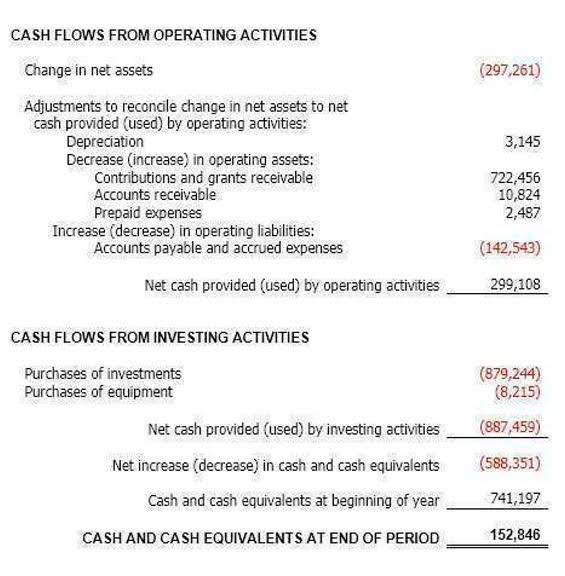The Accounting Equation: Key to Understanding Financials
The Accounting Equation: Key to Understanding Financials

The working capital formula is Current Assets – Current Liabilities. Barbara is a financial writer for Tipalti and other successful B2B businesses, including SaaS and financial companies. She is a former CFO for fast-growing tech companies with Deloitte audit experience. Barbara has an MBA from The University of Texas and an active CPA license.

Double-entry bookkeeping
On the other hand, double-entry accounting records transactions in a way that demonstrates how profitable a company is becoming. Investors are interested in a business’s cash flow compared to its liability, which reflects current debts and bills. While single-entry accounting can help you kickstart your bookkeeping knowledge, it’s a dated process that many other business owners, investors, and banks won’t rely on.
Balancing a New Business
The totals for the first eight transactions indicate that the company had assets of $17,200. The accounting equation also indicates that the company’s creditors had a claim of $7,120 and the owner had a residual claim of $10,080. The totals indicate that the transactions through December 4 result in assets of $16,900.

Everything You Need To Master Financial Modeling
The difference of assets and owner’s investment into business is your liabilities which you owe others in the form of payables to suppliers, banks etc. Financial analysis often involves both using or analyzing historic information and forecasting forward-looking financial statements. A thorough understanding of the engineering behind financial statements is essential for a valuation assignment or an M&A transaction. A CFO is who would handle the strategic normal balance analysis, capital structure decisions, and leverage insights from the accounting equation to guide business planning and investment decisions.
Which businesses use an accounting equation?
Consideration should be given to these important non-financial statement valuation issues if contemplating purchasing an investment in Edelweiss stock. This observation tells us that accounting statements are important in investment and credit decisions, but they are not the sole source of information for making investment and credit decisions. The purpose of this article is to consider the fundamentals of the accounting equation and to fundamental accounting equation demonstrate how it works when applied to various transactions. In double-entry accounting or bookkeeping, total debits on the left side must equal total credits on the right side. As a result of how each recorded accounting transaction affects the general ledger with balanced debits and credits, the financial statements are in balance. The accounting equation, also known as the balance sheet equation, is a fundamental principle in accounting that states that a company’s assets are equal to the sum of its liabilities and owner’s equity.
- On the other hand, equity refers to shareholder’s or owner’s equity, which is how much the shareholder or owner has staked into the company.
- This elegant system ensures every transaction can be traced through the accounts, creating an audit trail that validates financial integrity.
- Retained earnings are all the profits made to date but unpaid to the owners in the form of dividends.
- The difference between revenues and expenses results in net income or loss.
- This system creates a vital financial check-and-balance that’s been the global standard for over 500 years.
- The accounting equation is often expressed as an accounting formula and states that the sum of liabilities and equity is always equivalent to the total assets of the organization.
Learn financial statement modeling, DCF, M&A, LBO, Comps and Excel shortcuts. Double-entry bookkeeping started being used by merchants in Italy as a manual system during the 14th century. It is currently https://www.bookstime.com/articles/profit-and-loss-statement used to comply with generally accepted accounting principles (GAAP). Once you do understand the above, explained in very simple terms, you’re ready to “close the books” or to balance the accounts.


Alternatively, you can view the accounting equation to mean that ASC has assets of $10,000 and there are no claims by creditors (liabilities) against the assets. As a result, the owner has a residual claim for the remainder of $10,000. These elements are basically capital and retained earnings; however, the expanded accounting equation is usually broken down further by replacing the retained earnings part with its elements. The balance sheet is one of the three main financial statements that depicts a company’s assets, liabilities, and equity sections at a specific point in time (i.e. a “snapshot”). It is seen that the total credit amount equals the total debt amount. It is fundamental to the double-entry bookkeeping system of accounting, which helps us understand from the illustration above that total assets should be equal to total liabilities.
- Since Speakers, Inc. doesn’t have $500,000 in cash to pay for a building, it must take out a loan.
- Like assets, we can classify liabilities into current and non-current liabilities.
- These equations, entered in a business’s general ledger, will provide the material that eventually makes up the foundation of a business’s financial statements.
- We will now consider an example with various transactions within a business to see how each has a dual aspect and to demonstrate the cumulative effect on the accounting equation.
- It plays a crucial role in preparing financial statements that enables analyzing a firm’s financial health while ensuring transparency in accounting processes.
- The concept of expanded accounting equation is that it shows further detail on where the owner’s equity comes from.
What Is Shareholders’ Equity in the Accounting Equation?
The brilliance of the double-entry system lies in its self-balancing mechanism, acting as a check-and-balance system to reduce errors and uphold financial data integrity. Double entry system ensures accuracy and completeness in its accounting system. This methodical approach is fundamental to the accounting system’s integrity.






